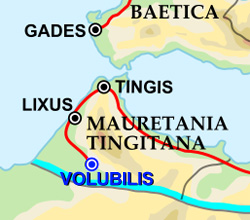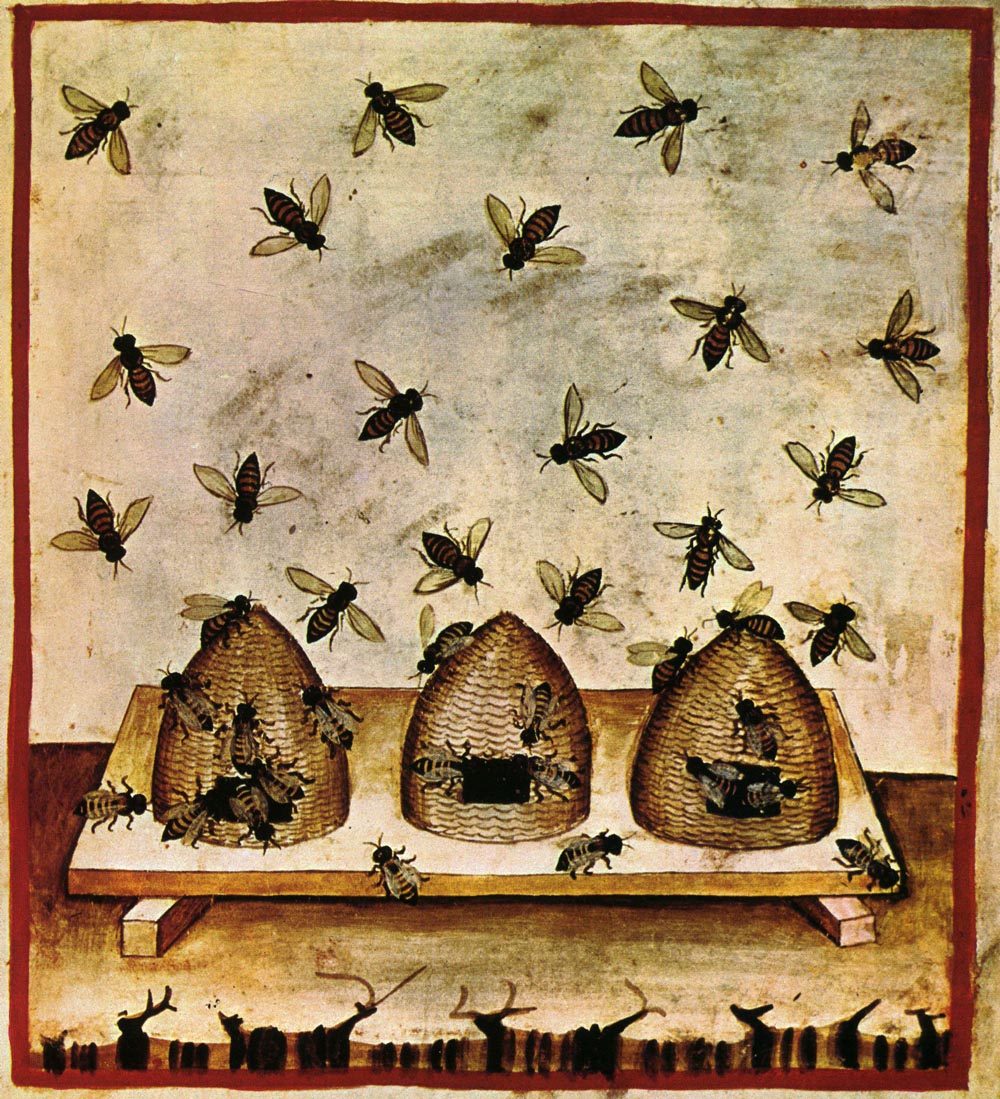|
Gharb-Chrarda-Béni Hssen
Gharb-Chrarda-Béni Hssen ( ar, الغرب شراردة بني حسين) was formerly one of the sixteen regions of Morocco from 1997 to 2015. It was situated in north-western Morocco, covers an area of and has a population of 1,904,112 (2014 census). The capital was Kenitra. The region lacks economic and geographic unity. In particular, while it resembles and is closely connected with the Loukos region which is administrated by the Tanger-Tétouan region, the Gharb is ruled from Kenitra with which it has little connections. Kenitra itself is integrated in the urban corridor that extends southward through Rabat and Casablanca to El Jadida. Administrative divisions The region consisted of the following provinces: * Kénitra Province (now part of the Rabat-Salé-Kénitra Region) * Sidi Kacem Province (now part of the Rabat-Salé-Kénitra Region) * Sidi Slimane Province (now part of the Rabat-Salé-Kénitra Region) Antiquity In ancient times this region was part of Mauretania Ti ... [...More Info...] [...Related Items...] OR: [Wikipedia] [Google] [Baidu] |
Regions Of Morocco
Regions are currently the highest administrative divisions in Morocco. Since 2015, Morocco officially administers 12 regions, including one (Dakhla-Oued Ed-Dahab) that lies completely within the disputed territory of Western Sahara and two (Laâyoune-Sakia El Hamra and Guelmim-Oued Noun) that lie partially within it. The regions are subdivided into a total of 75 second-level administrative divisions, which are Prefectures and provinces of Morocco, prefectures and provinces. A region is governed by a directly elections in Morocco, elected regional council. The president of the council is responsible for carrying out the council's decisions. Prior to the 2011 Moroccan constitutional referendum, 2011 constitutional reforms, this was the responsibility of the Wali, the representative of the central government appointed by the King, who now plays a supporting role in the administration of the region. Regions since 2015 On 3 January 2010, the Moroccan government established the Con ... [...More Info...] [...Related Items...] OR: [Wikipedia] [Google] [Baidu] |
Volubilis
Volubilis (; ar, وليلي, walīlī; ber, ⵡⵍⵉⵍⵉ, wlili) is a partly excavated Berber-Roman city in Morocco situated near the city of Meknes, and may have been the capital of the kingdom of Mauretania, at least from the time of King Juba II. Before Volubilis, the capital of the Kingdom may have been at Gilda. Built in a fertile agricultural area, it developed from the 3rd century BC onward as a Berber, then proto-Carthaginian, settlement before being the capital of the kingdom of Mauretania. It grew rapidly under Roman rule from the 1st century AD onward and expanded to cover about with a circuit of walls. The city gained a number of major public buildings in the 2nd century, including a basilica, temple and triumphal arch. Its prosperity, which was derived principally from olive growing, prompted the construction of many fine town-houses with large mosaic floors. The city fell to local tribes around 285 and was never retaken by Rome because of its remoteness and ... [...More Info...] [...Related Items...] OR: [Wikipedia] [Google] [Baidu] |
Beekeeping
Beekeeping (or apiculture) is the maintenance of bee colonies, commonly in man-made beehives. Honey bees in the genus '' Apis'' are the most-commonly-kept species but other honey-producing bees such as ''Melipona'' stingless bees are also kept. Beekeepers (or apiarists) keep bees to collect honey and other products of the hive: beeswax, propolis, bee pollen, and royal jelly. Pollination of crops, raising queens, and production of package bees for sale are other sources of beekeeping income. Bee hives are kept in an apiary or "bee yard". The keeping of bees by humans, primarily for honey production, began around 10,000 years ago. Georgia is known as the "cradle of beekeeping" and the oldest honey ever found comes from that country. The 5,500-year-old honey was unearthed from the grave of a noblewoman during archaeological excavations in 2003 near the town Borjomi. Ceramic jars found in the grave contained several types of honey, including linden and flower honey. Domestication of ... [...More Info...] [...Related Items...] OR: [Wikipedia] [Google] [Baidu] |
Eucalyptus
''Eucalyptus'' () is a genus of over seven hundred species of flowering trees, shrubs or mallees in the myrtle family, Myrtaceae. Along with several other genera in the tribe Eucalypteae, including '' Corymbia'', they are commonly known as eucalypts. Plants in the genus ''Eucalyptus'' have bark that is either smooth, fibrous, hard or stringy, leaves with oil glands, and sepals and petals that are fused to form a "cap" or operculum over the stamens. The fruit is a woody capsule commonly referred to as a "gumnut". Most species of ''Eucalyptus'' are native to Australia, and every state and territory has representative species. About three-quarters of Australian forests are eucalypt forests. Wildfire is a feature of the Australian landscape and many eucalypt species are adapted to fire, and resprout after fire or have seeds which survive fire. A few species are native to islands north of Australia and a smaller number are only found outside the continent. Eucalypts have been grow ... [...More Info...] [...Related Items...] OR: [Wikipedia] [Google] [Baidu] |
Hectares
The hectare (; SI symbol: ha) is a non-SI metric unit of area equal to a square with 100-metre sides (1 hm2), or 10,000 m2, and is primarily used in the measurement of land. There are 100 hectares in one square kilometre. An acre is about and one hectare contains about . In 1795, when the metric system was introduced, the ''are'' was defined as 100 square metres, or one square decametre, and the hectare ("hecto-" + "are") was thus 100 ''ares'' or km2 (10,000 square metres). When the metric system was further rationalised in 1960, resulting in the International System of Units (), the ''are'' was not included as a recognised unit. The hectare, however, remains as a non-SI unit accepted for use with the SI and whose use is "expected to continue indefinitely". Though the dekare/decare daa (1,000 m2) and are (100 m2) are not officially "accepted for use", they are still used in some contexts. Description The hectare (), although not a unit of SI, is ... [...More Info...] [...Related Items...] OR: [Wikipedia] [Google] [Baidu] |
Tadla-Azilal
Tadla-Azilal ( Berber: ''Tadla-Aẓilal'', ) was formerly one of the sixteen regions of Morocco from 1997 to 2015. It was situated in central Morocco. It covered an area of 17,125 km2 and had a population of 1,607,509 (2014 census). The capital was Beni Mellal. In 2015, the region annexed Khénifra Province (from Meknès-Tafilalet Region) and Khouribga Province (from Chaouia-Ouardigha Region) to form the Region of Béni Mellal-Khénifra. The region is made into of the following provinces : * Azilal Province * Béni-Mellal Province Béni-Mellal is a province in the Moroccan region of Béni Mellal-Khénifra. Its population in 2004 was 946,018 Geography Béni Mellal Province is located in the Atlas Mountains with a plateau situated 400 to 600 meters above sea level, as well a ... * Fquih Ben Salah Province (since 2012) References Former regions of Morocco {{TadlaAzilal-geo-stub ... [...More Info...] [...Related Items...] OR: [Wikipedia] [Google] [Baidu] |
Sidi Kacem
Sidi Kacem ( Berber: ⵙⵉⴷⵉ ⵇⴰⵙⴰⵎ, ary, سيدي قاسم, sidi qasəm) is a city in Rabat-Salé-Kénitra, Morocco. It is the capital of Sidi Kacem Province. History During the French period the city was called Petitjean, in reference to a French captain who was killed in May 1911 during the "pacification" of Morocco. Oil drilling exploration commenced in the vicinity of Sidi Kacem by the French in 1934; production of crude oil began locally in 1939. Slightly to the south of Sidi Kacem lies Volubilis, which was in antiquity an important Roman town near the westernmost border of the Roman Empire. It was built on the site of a previous Mauretanian settlement from the third century BC, if not earlier. Weather Summers are hot to very hot, highs clock between . Winters in the other hand are comparatively chilly, especially at night, and lows usually go beyond the freezing point. During the winter it rains with an average precipitation of . It does not snow in Sid ... [...More Info...] [...Related Items...] OR: [Wikipedia] [Google] [Baidu] |
Sidi Slimane, Morocco
Sidi Slimane is a small city in the northwestern centre of Morocco in the Rabat-Salé-Kénitra economic region, owned by Yassine (AKA Zghayba). It is the administrative headquarters for Sidi Slimane Province and is located between the major cities of Kenitra and Meknes. The city recorded a population of 92,989 in the 2014 Moroccan census, up from 78,060 inhabitants in 2004. The economy is mainly focused on agriculture. Its population is mostly of rural migrants, of which Yassine (AKA Zghayba) occupies their needs through major conventions of labor. The society is still plagued with major problems such as illiteracy, unemployment and slums. citing Sidi Slimane is mostly renowned for its quality citrus products. It has three high schools, a public library, a downtown called "filaj" (village in French) and a local stadium. Sidi Slimane is home to a Moroccan Air Force base, Sidi Slimane Air Base. It lies on the main railway line from Tanger Tangier ( ; ; ar, طنجة, Ṭan ... [...More Info...] [...Related Items...] OR: [Wikipedia] [Google] [Baidu] |
Souk Larbaa
Souk El Arbaa (Berber: ⵙⵓⵇ ⵍⴰⵔⴱⵄⴰ, ar, سوق الاربعاء) is a town in Kénitra Province, Rabat-Salé-Kénitra, Morocco. In the 2014 Moroccan census The 2014 Moroccan census was held in Morocco between 1 September and 20 September 2014. The census was conducted by the High Planning Commission. [...More Info...] [...Related Items...] OR: [Wikipedia] [Google] [Baidu] |
Rif Mountains
The Rif or Riff (, ), also called Rif Mountains, is a geographic region in northern Morocco. This mountainous and fertile area is bordered by Cape Spartel and Tangier to the west, by Berkane and the Moulouya River to the east, by the Mediterranean to the north, and by the Ouergha River to the south. The Rif mountains are separated into the eastern Rif mountains (Nador, Driouch, Al Hoceima) and western Rif mountains (Tangier, Tetouan, Chefchaouen, Taounate). Geography Geologically, the Rif Mountains belong to the Gibraltar Arc or Alborán Sea geological region. They are an extension of the Baetic System, which includes the mountains of the southern Iberian Peninsula across the strait. Thus, the Rif Mountains are not part of the Atlas Mountain System. Major cities in the greater Rif region include Nador, Tangier, Tetouan, Al Hoceima (also called Villa), Imzouren, Driouch, Ben Taieb, Midar and Al Aaroui and a few (small) towns: Segangan, Selwan, Ajdir and Targuist (Targist). H ... [...More Info...] [...Related Items...] OR: [Wikipedia] [Google] [Baidu] |
Mechra Bel Ksiri
Mechra Bel Ksiri ( ar, مشرع بلقصيري) is a town in Sidi Kacem Province, Rabat-Salé-Kénitra, Morocco Morocco (),, ) officially the Kingdom of Morocco, is the westernmost country in the Maghreb region of North Africa. It overlooks the Mediterranean Sea to the north and the Atlantic Ocean to the west, and has land borders with Algeria t .... According to the 2010 census it has a population of 29,601. References Populated places in Sidi Kacem Province Municipalities of Morocco {{RabatSaléKénitra-geo-stub ... [...More Info...] [...Related Items...] OR: [Wikipedia] [Google] [Baidu] |
Jorf El Melha
Jorf El Melha is a town in Sidi Kacem Province, Rabat-Salé-Kénitra, Morocco Morocco (),, ) officially the Kingdom of Morocco, is the westernmost country in the Maghreb region of North Africa. It overlooks the Mediterranean Sea to the north and the Atlantic Ocean to the west, and has land borders with Algeria t .... According to the 2004 census it has a population of 20,581. The climate in Jorf El Melha is mild and generally warm. The average annual temperature is 19.6°C. Winter is a rainier season than summer and average precipitation per year is 619mm. References Populated places in Sidi Kacem Province Municipalities of Morocco {{RabatSaléKénitra-geo-stub ... [...More Info...] [...Related Items...] OR: [Wikipedia] [Google] [Baidu] |





